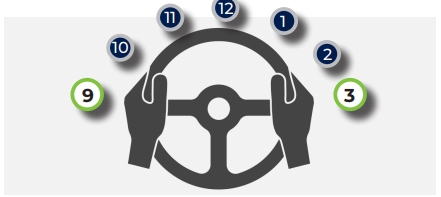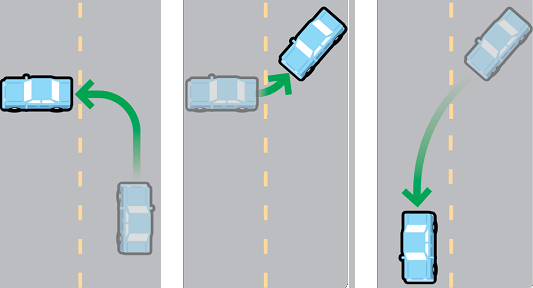Our Blog

HAND POSITION
A motorist’s grip on the steering wheel is important. The steering wheel can be thought of as the face of a clock. For normal driving, a motorist should grip the steering wheel by the outside rim at the 9 and 3 o’clock positions, keeping his/her thumbs along the face of the wheel. Gripping the steering wheel as described diminishes the risk of hand, wrist, or arm injury if the air bag is deployed. A motorist should never turn the wheel while gripping it from the inside of the rim, hand facing inward. The steering wheel should be held firmly but not too tight, as steady as possible as the vehicle’s speed increases. Both hands should always be kept on the wheel, except when shifting gears or giving hand signals.
The motorist should keep the vehicle in the center of the lane that it is traveling. On a two-lane road with traffic coming toward the vehicle, the motorist should keep to the right. Once a motorist feels how the vehicle reacts to steering, he/she will be ready to practice turning, parking and other movements. It takes practice to get the feel of steering. If the vehicle has anti-lock brakes (ABS), the motorist should never violently jerk the steering wheel while braking.
HAND-OVER-HAND STEERING
Hand-over-hand steering permits a motorist to make steering adjustments ranging from very minor up to a half turn of the wheel, while keeping both hands on the wheel. If turning through a slight curve, both hands will typically retain their original grip on the wheel, making only slight finger or wrist adjustments as necessary to maintain the path of travel. However, when moving through a turn, the hands may move as much as 165 degrees. The motorist initiates the turn by pushing the wheel up from the 9 or 3 o’clock position toward 12 o’clock, and the opposite hand crosses over and down to the 9 or 3 o’clock position, as appropriate to provide input or to stabilize steering. The original hand then returns to the original start position of 9 or 3 o’clock. The process is reversed to return to a straight path, or the wheel can be allowed to slip through the fingers (controlled slipping) to straighten when coming out of a turn, while both hands are always on the wheel to adjust as necessary. Hand-over-hand steering is particularly well suited for precision maneuvers, steering through curves, intersection entry and exit, and skid recovery.





